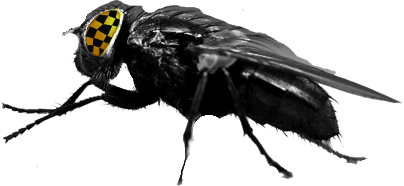Bees like coffee too 24 Mar 2015
Caffeinated flowers give bees a buzz
Flowers that lace their nectar with the right amount of caffeine attract more pollinators.
Yao Hua Law reports.

Psychoactive substances in flower nectar keep the bees buzzing back for more. Credit: Getty Images
Got a favourite local where they serve your coffee just how you like it? So do bees, new research shows. The insects prefer to visit flowers that lace their nectar with just the right amount of caffeine, say James Thomson and his colleagues at the University of Toronto. Plants with the right nectar recipe gain extra visits from the bees, improving their chances of pollination.
Although it has been known for several decades that the nectar of coffee, citrus and other plants contains small amounts of caffeine and related compounds such as nicotine, the function this plays for the plant – if any – has been contentious. The plants make much more of these compounds in their leaves, where their role is to make the leaf bitter and protect the plant against hungry herbivores.
Some researchers suspected these repellent compounds might be somehow “leaking” into the nectar – and that as long as their concentration remained low, it didn’t hamper the plant or pollinator too much. But Thomson admits he always harboured a “fantasy that plants should make nectar that is ‘addictive’ to pollinators”. He thought that natural selection would favour plants using a little of these psychoactive substances in nectar – enough to give the bees a buzz, but not the jitters.
In 2005, Natarajan Singaravelan and colleagues at the University of Haifa in Israel reported that honeybees preferred sugar solution with low doses of caffeine to those without. Singaravelan’s work spurred Thomson to examine whether this preference affects a plant’s pollination success – he published the results in the journal Arthropod-Plant Interactions in January.
Measuring pollination success in the field and controlling for all the variables at play is difficult. So Thomson used artificial flowers instead.
Thomson’s artificial flowers simulate the essentials of a plant-pollinator interaction – the giving of nectar and the transfer of pollen. Lidded jars containing sugar solution (nectar) function as flowers. To drink the sugar solution, a bee enters a compartment on the lid, like “a car entering a garage,” says Thomson. Powdered food dye (pollen) drops on to the bee’s back as it moves from flower to flower.
To start the experiment, each flower was filled with a sugar solution with one of three levels of caffeine –none, low or high – with lids of a corresponding colour. The low and high caffeine levels – a thirtieth and a third that of instant coffee, respectively – had been documented in coffee flowers. (The actual colours used to denote caffeine level were changed each time the experiment was run, to rule out that flower colour was affecting the bees’ decision-making).
After allowing the bees to forage for 36 hours in an enclosure containing 36 fake flowers, to sample the different nectars available, Thomson’s team added the powdered food dye to the flowers’ depositing mechanism on their lid. They then let the bees forage freely for another eight hours before measuring the final amount of dye received by each flower.
The results showed that those artificial flowers that provided low-caffeine nectar received 42% of all the pollen transferred, compared to 29% for the caffeine-free flowers and 29% for the high-caffeine flowers.
So the plants do seem to benefit from caffeinating their nectar, but what do the bees gain from the arrangement? In mammals, low doses of caffeine strengthen memory. In a 2013 publication in Science, insect neuroscientist Geraldine Wright at Newcastle University in the UK showed it boosts bee memory, too.
Perhaps worker bees “rendered zippier and more intelligent” by caffeine might better feed their colonies, but “we just don’t know”.
Wright had trained honeybees to associate sugar rewards with specific odours. She found that bees were “more likely to remember the conditioned odour” after they had fed on moderately-caffeinated sugar. Bees on caffeine learnt faster, and better remembered the conditioned odour up to three days later.
As for Thompson’s latest study, “it's a relief he did the work!” says Wright. “They did what we needed to show in our paper. They showed that there is some advantage to the plant from the caffeine. It's very elegantly shown.”
While the bees clearly prefer caffeine-boosted nectar, whether they actually benefit from it long-term remains unclear, says Thomson. Perhaps worker bees “rendered zippier and more intelligent” by caffeine might better feed their colonies, but “we just don’t know,” he says. “We haven’t gone that far.”
Popular culture paints an altruistic picture of busy bees and flowers, but pollination scientists view every pollinator and flower tango as “mutual exploitation”. Each evolves to influence the other for its own advantage. The bees seek food to feed their young, and the plants want to transfer pollen. Plants that lace their nectar with psychoactive substances such as caffeine fit nicely into the annals of evolutionary battles between plants and their pollinators.


